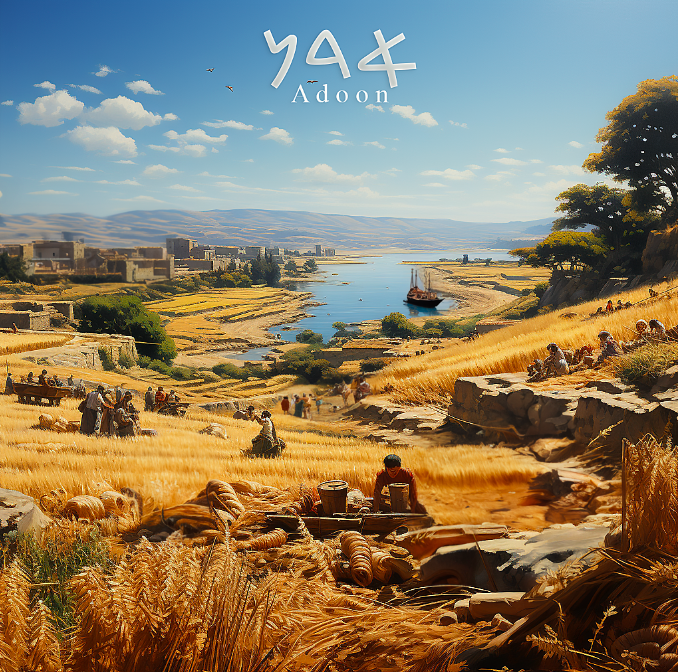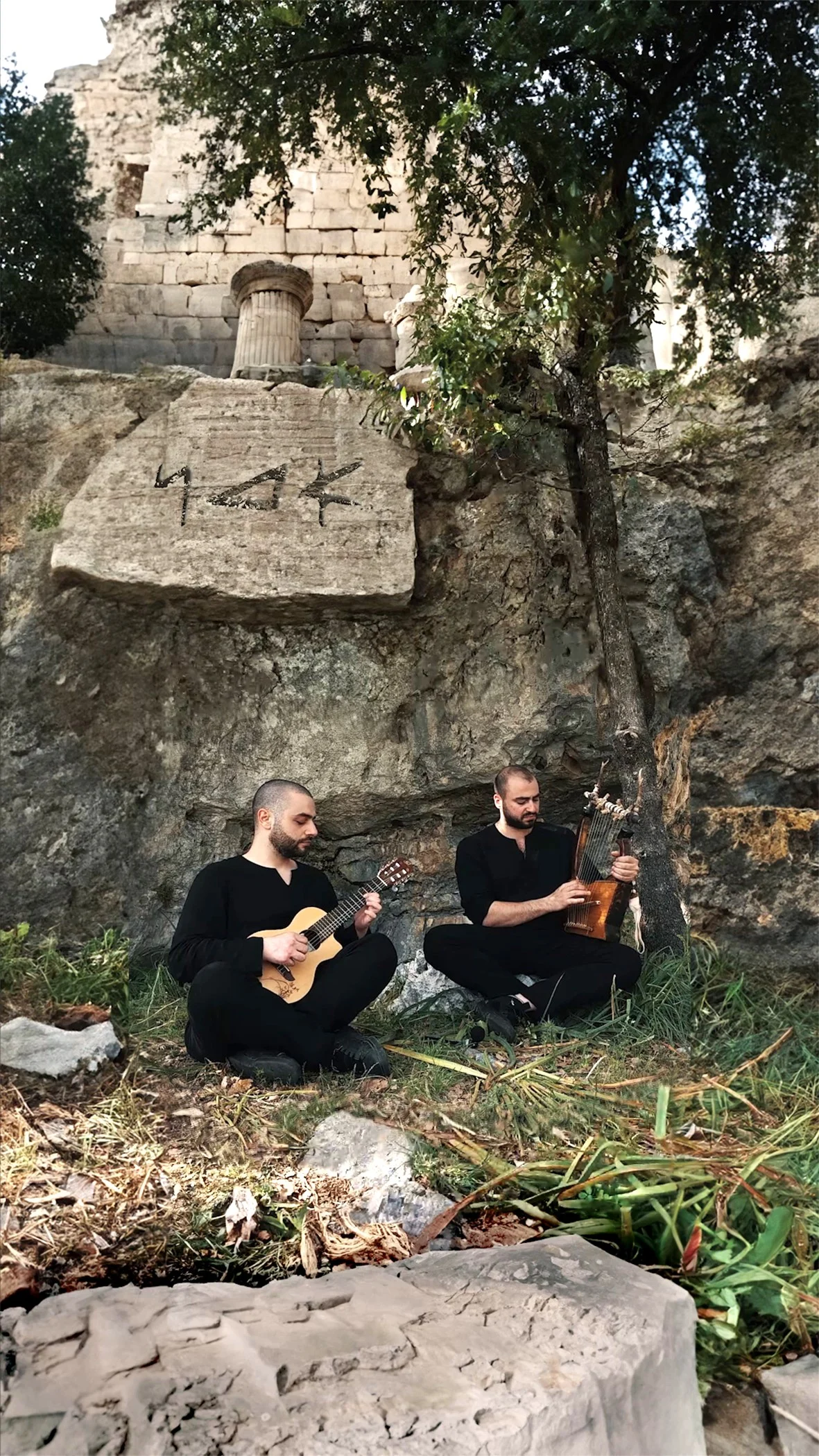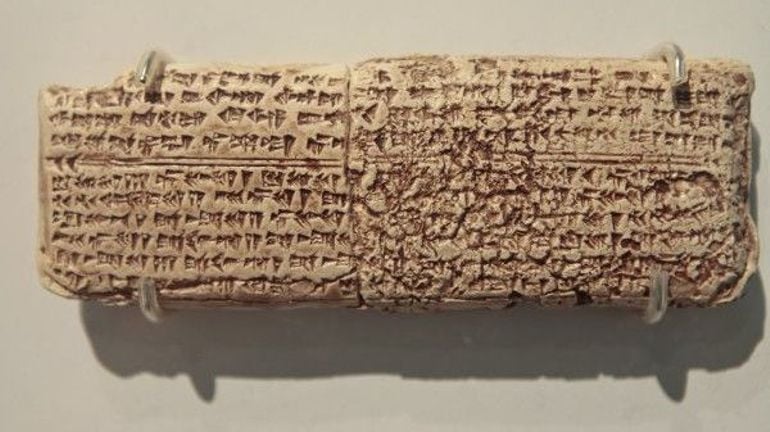
Cover of Adoon's self-titled debut.
Going back to the roots of ancestral music, and drawing from it music keys characteristic of the Phoenicians and Canaanites who inhabited this land, is how they form the nucleus of their contemporary compositions.
“The idea had been in the back of our minds for years. It took COVID-19 and the time that was made available by the lockdown for us to bring it to fruition,” Tony al-Khoury told L’Orient-Le Jour.
Khoury, a sound designer, singer and lute player, launched with Youssef Helayel, a guitarist and music teacher, a Phoenician-inspired folk band called Adoon two years ago.
It’s their own transcription of the Phoenician word: Adoon, which means lord, and was considered one of the most important Canaanite gods. They said he is called Adonis in Greek mythology. The name is also the title of the song they have just released as a preamble to an album in Phoenician.
 Courtesy of the artist.
Courtesy of the artist.
Youssef Helayel and Tony el-Khoury, Adoon's musical duo.
From the oldest piece in the world...
For this very first track, already available on YouTube and Spotify, the two young musicians aged 28 and 29 — who are as passionate about the region’s ancient history as they are about folk music — chose to draw their inspiration directly from the oldest known melody, dating back to 1400 BC.
It is the Hymn to Nikkal (also known as h.6), addressed to the goddess of fertility, and is part of a collection of 36 Hurrian songs inscribed in cuneiform on the famous clay tablets of Ugarit.
Fragments of these tablets were discovered over the last century during excavations carried out in this ancient Canaanite city, present-day Ras Shamra on the Syrian Mediterranean coast, 10 kilometers north of Latakia.
This hymn, which has come down to us almost in its entirety, is considered to be the oldest known example of musical notation in the world.
“It was deciphered in 1950 by [French] musicologist Richard Dumbrill, author of The Musicology and Organology of the Ancient Near East. It was based on his interpretation that we dissected it melodically, using the scale and range of musical notes in our piece Adoon, while adding to the ancient instruments which are the lyre, lute, aulos, qanun and cymbals, the contemporary sounds of guitar, bass and electronic percussion,” said the young musicians, who resorted to a dozen instrumentalists to record this first track.
 Courtesy of the artist.
Courtesy of the artist.
The oldest musical score engraved on one of the Ugarit tablets, at the National Museum in Damascus.
Music without political connotations
Their Adoon is a free, renovated interpretation of this Hurrian-Canaanite hymn that is over three millennia old. But it retains its ancestral tones thanks to Khoury’s incantatory singing in the Phoenician language.
“Our approach, although based on archaeological research, remains purely artistic and intuitive,” said Helayel.
“In fact, we started from the symbolism of the oldest musical piece in the world from this coastal city, which was once part of the land of Canaan, to recreate in our own way what we felt was closest to the music and songs of our Phoenician ancestors,” he added.
“On this basis, and inspired by the legend of Adonis, we wrote our own lyrics in Arabic and English on the theme of the cycles of life. And to translate them into Phoenician, we called on Sammy Kanaan, a Lebanese-German linguist renowned for his expertise in this dead language. He did a marvelous job with due regard to the rhyme and helped us with the pronunciation,” he said.
The two musicians, composers and arrangers, who produce their own music, revealed that a second opus in the same vein will follow very soon. They added that their music is devoid of any ideological connotations or political allegations.
This article was originally published by L'Orient-Le Jour. Translated by Joelle El Khoury.
